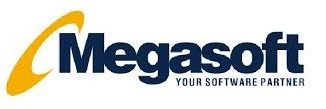
In the world of enterprise technology, SAP and Salesforce stand as titans. They are the central nervous systems for thousands of the world’s most successful companies, acting as the definitive systems of record for everything from financials and supply chains to customer relationships. This stability is their greatest strength. These platforms are robust, secure, and reliable. However, this strength can also be a source of immense frustration. The very characteristics that make them dependable—their scale, complexity, and structured nature—often make them slow to adapt. In a business environment that demands constant innovation and agility, the monolithic core of an ERP can feel less like a foundation and more like a ball and chain, creating a significant gap between what the business needs and what IT can deliver. This is where the true power of a modern low-code application platform becomes transformative, and where Mendix Development Services come into play, offering a powerful and agile way to build on top of these core systems without disrupting them. These services are not about replacing the core; they are about unlocking its value by rapidly building the custom applications, mobile solutions, and unique workflows that the business demands, effectively bridging the innovation gap.
The fundamental challenge with extending traditional ERPs lies in the development approach itself. Customizing SAP often involves deep, specialized knowledge of ABAP, with long development cycles and rigorous testing that can span months or even years. Similarly, while Salesforce is more inherently flexible, complex customizations can lead to tangled Apex code, governor limit headaches, and a spiraling total cost of ownership as more specialized developers and expensive user licenses are required. The traditional answer has been to either force business processes to fit the software’s limitations or embark on costly, high-risk custom development projects. Mendix introduces a third, far more effective option. It champions a model-driven, visual development philosophy that abstracts away the underlying code complexity. Instead of writing thousands of lines of code, developers and even business-savvy users can design data models, user interfaces, and business logic using intuitive drag-and-drop tools. This strategic shift is where the value of Mendix Consulting becomes evident. It’s not just about procuring a new tool; it’s about embracing a new way of working. Effective consulting helps organizations establish the right governance, security frameworks, and architectural best practices to leverage low-code at scale, transforming IT from a gatekeeper of the core systems into an enabler of rapid, business-led innovation.
This collaborative approach is arguably the most profound impact of the Mendix platform. Historically, application development has been a game of telephone. A business analyst documents requirements in a dense Word document, hands it to a project manager, who translates it for a team of developers, who then interpret those instructions into code. Each handoff introduces the risk of misinterpretation, leading to delays and a final product that doesn’t quite meet the original vision. Mendix shatters this siloed model by creating a common language that both business and IT can understand. The visual models are not just mockups; they are the application itself. This allows for an iterative, agile process where business stakeholders can see their ideas come to life in days or weeks, not months, and provide immediate feedback. This fusion of business knowledge and technical execution requires a new kind of professional. This is the domain of a true Mendix Expert. This individual is more than just a developer; they are a business-focused problem solver who understands how to translate a business challenge into a functional, scalable, and secure application. A Mendix Expert is a strategic asset who can facilitate workshops, guide citizen developers, and build the enterprise-grade applications that drive real business value, acting as the linchpin between the business vision and its technical realization.
Unlocking the SAP Core: Agility Without Disruption
For decades, the mantra in the SAP world has been “keep the core clean.” This principle advises against heavily customizing the core SAP system, as each customization adds complexity, increases maintenance overhead, and makes future upgrades—especially the critical migration to S/4HANA—significantly more difficult and risky. Yet, the business rarely stops demanding new functionalities, mobile access for field workers, or modern portals for suppliers and customers.
Mendix provides an elegant solution to this dilemma by acting as an agile layer of innovation that sits on top of the SAP core, interacting with it through standard, approved APIs.
- Seamless and Secure Integration:
Mendix offers out-of-the-box connectors specifically designed for the SAP ecosystem. It can seamlessly consume OData services exposed by SAP Gateway, call remote-enabled BAPIs and RFCs, and connect directly to SAP HANA databases. This means a Mendix application can read real-time inventory levels from SAP Materials Management (MM), create a sales order in SAP Sales and Distribution (SD), or update equipment maintenance - Practical Use Cases for SAP Extensions:
- Mobile Field Service Management: A manufacturing company can equip its field technicians with a simple mobile app built in Mendix. The app could allow them to view their assigned work orders (pulled from SAP PM), record their time and materials used, capture photos of the repair, and update the work order status in real-time. This data is instantly pushed back to SAP, eliminating manual paperwork, reducing errors, and providing management with a live view of field operations. Building this as a native SAP mobile app would be a monumental task; with Mendix, it can be a matter of weeks.
- Supplier Collaboration Portals: Instead of relying on email and spreadsheets to manage supplier interactions, a company can build a Mendix portal. Suppliers can log in to view purchase orders, submit advance shipping notices (ASNs), and check the status of their invoices. This data is read from and written directly to the SAP MM and FI/CO modules. This improves supply chain visibility, reduces the administrative burden on procurement teams, and strengthens supplier relationships.
- De-risking S/4HANA Migrations: Migrating to S/4HANA is a top priority for nearly every SAP customer. Many companies discover that years of custom code (Z-code) built into their old ECC system cannot be easily migrated. Mendix offers a strategic pathway. Companies can identify the business-critical functions supported by that custom code and rebuild them as separate, agile applications on the Mendix platform before the migration. This allows them to move to a more standardized, cleaner S/4HANA core, with the custom functionality living independently in Mendix, still seamlessly integrated.
Supercharging the Salesforce Ecosystem: Beyond Clicks and Code
Salesforce revolutionized the enterprise software landscape with its “clicks, not code” philosophy and a vibrant AppExchange ecosystem. It is incredibly powerful for its intended purpose—managing customer relationships. However, as businesses try to stretch Salesforce to handle highly complex, industry-specific processes or consolidate data from across the enterprise, they can run into limitations.
Apex code can become complex, hitting governor limits on processing time or API calls. The standard user interface, while functional, may not be ideal for task-specific, high-volume data entry. Furthermore, licensing every employee who needs to interact with Salesforce data—even indirectly—can become prohibitively expensive. Mendix complements Salesforce by addressing these specific challenges.
- Busting Through Governor Limits:
Imagine a complex quoting process for a highly configured product that requires thousands of calculations and rule validations. Trying to build this logic directly within Salesforce using Apex could easily exceed governor limits, causing the process to fail. By externalizing this logic into a Mendix application, the heavy lifting happens on the Mendix runtime. The Mendix app can pull the necessary product and customer data from Salesforce via APIs, run the complex configuration and pricing engine, and then push the final, validated quote back into Salesforce. This offloads the intensive processing, ensuring performance and reliability while still using Salesforce as the system of record. - Creating Rich, Purpose-Built User Experiences:
While Lightning Web Components offer great flexibility, creating a highly tailored, multi-system “single pane of glass” view for a specific role can still be challenging. Mendix excels at this. A financial services company could build a “Client 360” application for its wealth managers. This Mendix app could pull client profile and opportunity data from Salesforce, portfolio information from a separate core banking system, and market data from a third-party API, presenting it all in a single, intuitive dashboard. The wealth manager gets a holistic view without having to log in to three different systems, dramatically improving their efficiency and ability to serve clients. - Optimizing License Costs:
Consider a scenario where 500 warehouse employees need to view shipping information for orders managed in Salesforce. Giving each of them a full Salesforce license would be financially unfeasible. A more intelligent approach is to build a simple Mendix application that allows these employees to scan a barcode and view the relevant shipping details. This application can interact with Salesforce through a single, dedicated integration user account. The 500 employees use the Mendix app (with more flexible and cost-effective licensing), while the core Salesforce data remains secure and the number of expensive Salesforce licenses is kept to a minimum.
The Core Pillars of Mendix Acceleration
Whether augmenting SAP or Salesforce, the value of Mendix is rooted in a few core principles that collectively enable unprecedented speed and business value.
- Radical Speed and Agility: The visual, model-driven approach of Mendix is not just an incremental improvement. It represents a quantum leap in development speed. Teams consistently report development cycles that are 6 to 10 times faster than traditional methods. This is achieved through reusable components, visual workflow builders, and one-click deployment capabilities that automate much of the technical overhead.
- Deep Collaboration: Mendix is designed for fusion teams. The platform’s integrated feedback and project management tools, combined with the intuitive visual language, ensure that business stakeholders and developers are always aligned. This continuous feedback loop eliminates surprises and ensures the final product truly meets the business need.
- Enterprise-Grade Governance and Control: A common fear with low-code is that it will lead to “shadow IT” and an uncontrolled sprawl of poorly built applications. Mendix addresses this head-on with a robust governance framework. It offers features for managing user roles and permissions, monitoring application performance, ensuring data security, and maintaining a portfolio of all applications built on the platform. It is built for the cloud but can be deployed anywhere—on-premise, in a private cloud, or in the Mendix Cloud—giving IT full control over the application landscape.
Conclusion: From Monolith to Composable Enterprise
The era of the all-encompassing, monolithic ERP system that dictates business process is over. The future belongs to the “composable enterprise”—an organization built from interchangeable, flexible, and scalable digital components. In this model, core systems of record like SAP and Salesforce provide the stable foundation, while a platform like Mendix provides the agility to build and adapt the unique business capabilities that deliver a competitive edge.
Mendix does not seek to replace these powerful core systems. Instead, it unleashes their full potential by providing a rapid, governed, and collaborative way to extend their reach. It allows businesses to finally say “yes” to innovation, to build the mobile apps their employees are asking for, the portals their partners need, and the streamlined workflows that drive efficiency, all without compromising the integrity of their most critical enterprise systems. It is the definitive bridge over the innovation gap, transforming IT and business from adversaries into true partners in digital transformation.

Leave a Reply
You must be logged in to post a comment.